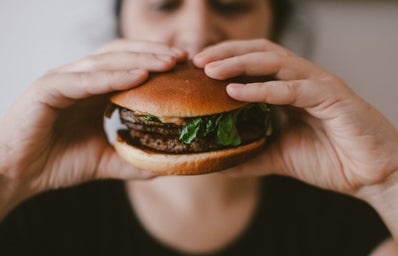Eating disorders are more common than they should be. Even though this subject has more prominence nowadays than before, they still are the psychological diseases with high death rates. This is because of faulty statistics in this area; the majority of the diagnoses are only given when the patient is already at a critical level.
It is a good thing to know the main symptoms of a disorder for it to be easier identified. When it comes to this kind of disease, some symptoms are excessive exercise practice, exaggerated worry with physical appearance, humor changes and, a very common one: the guilty feeling after eating.
In general, feeling guilty after eating is an engrained matter in society. It is normalized. However, the difference between a “normal” guilt from a worrier one is analyzed based on three things: frequency, intensity and duration.
To understand better this issue, I spoke with Juliana Meirelles, a psychology teacher, master and PhD in psychology from PUC-SP, with a doctoral internship at New York University (CUNY); specialist in eating disorders by AMBULIM (IPq-HCFMUSP) and researcher in the area of eating disorders, body dissatisfaction and social media.
The guilt feeling
Eating disorders are based on a big fear of body changes, explains Juliana. More than associated, this feeling is what sustains a fear of eating, added to the guilt after this activity. The major origin of this behavior is aesthetic pressure, which weighs mostly in the most affected group by the disease in question: women. We are always held accountable for looking like the unattainable standard, in which our value is associated with physical appearance.
The feeling of guilt affects even interpersonal relationships in the patients’ life. They start avoiding social activities that, in some way, involve food. This behavior starts with a fear of not having control over what they will eat and ends up feeling guilty. In people with eating disorders, this food environment can even cause tachycardia and anxiety.
How to treat it?
Firstly, when the symptoms start interfering in your life it is time to search for help. To treat these diseases, it is necessary to have the follow-up of a psychologist and a nutritionist, both specialized in the subject.
After asking Juliana about the psychological part in treatment, she explained that eating disorders are motivated not only by aesthetic suitability, but also by a “lack of control” in life, so then people start discounting this dissatisfaction on food, trying to find something to have complete control over. Having this in mind, the role of the psychologist is to demystify the idea of an ideal body, developing skills related to self-esteem, self-confidence and self-love.
More of the patient’s side
With the intention of understanding more about the development of an eating disorder and all the feelings connected with it, I talked with Giulia Lopes, an 18 years old girl and nutrition’s student that went through the disease it in 2019.
As well as many patients, her disorder started with two major motivations: the bullying that she suffered when she was younger and social acceptance. At first, she made a diet by herself, cutting foods that she considered “bad”; sometime later, she had stopped eating groups of food such as carbs and fat, ending up losing more than 10kg in a month and getting the diagnosis of anorexia.
Giulia described a constant fear of eating and a kind of panic about gaining weight, always counting calories and thinking thoroughly about what she would eat. Both these things deeply affected her relationship with her friends and family, once she started avoiding some social events.
With all the restrictions, Giulia started having compulsive episodes, in which she completely lost her rational side, discounting feelings and emotions in food and feeling bad after eating a bigger quantity of food than usual. That was when she was diagnosed with purgative compulsive anorexia.
Nowadays, Giulia is attended by a nutritionist, a psychologist and a psychiatrist. Although she is already in treatment, relapses do exist, so I asked her about something that helps her in these most vulnerable moments. Giulia told me that a strategy of hers is having a list of pros and cons of the disease to visualize that it has much more negative points about continuing with the disorder habits than good ones.
Important reminders
– The real healthy is eating different types of food, without classifying them as “good” or “bad” and with no big restrictions;
– Even if everybody ate the exact same things, we would have absolutely different bodies. Different people have different bodies;
– Eating disorders have no “face”, so it is nice to avoid talking about someone’s image, it is impossible to know everything that they passed and is passing through to look like that;
—————————————————————–
The article above was edited by Larissa Mariano.
Liked this type of content? Check Her Campus Casper Libero home page for more!



